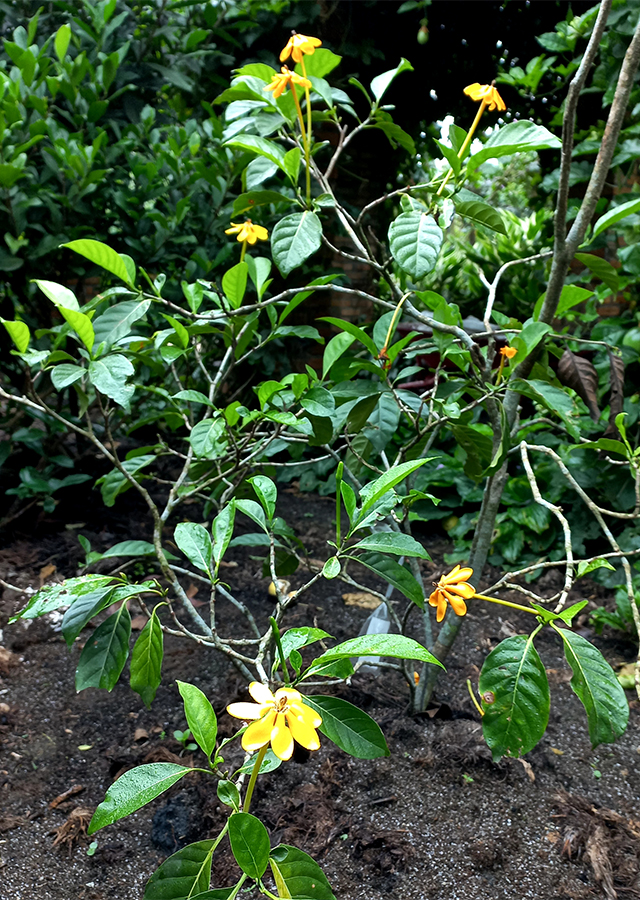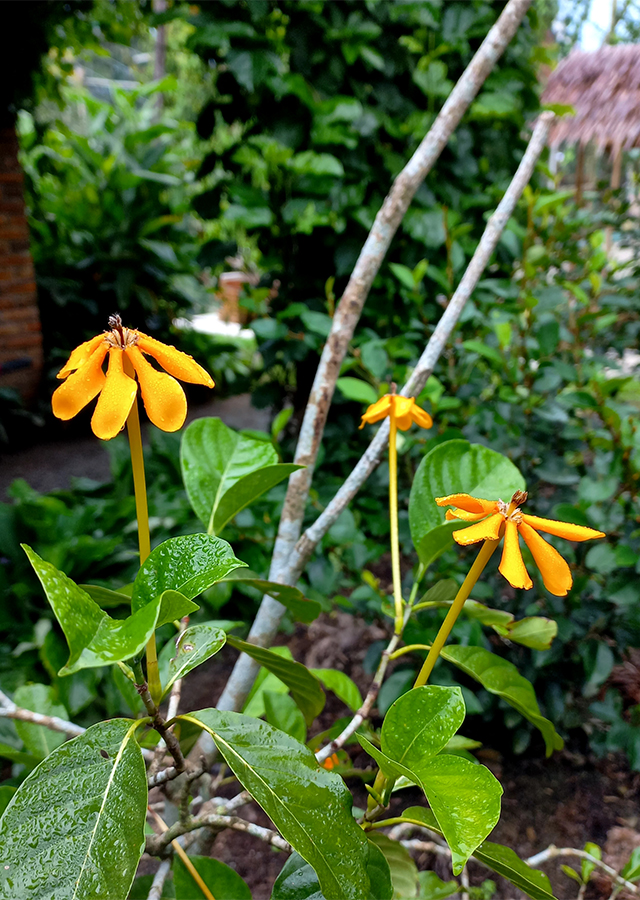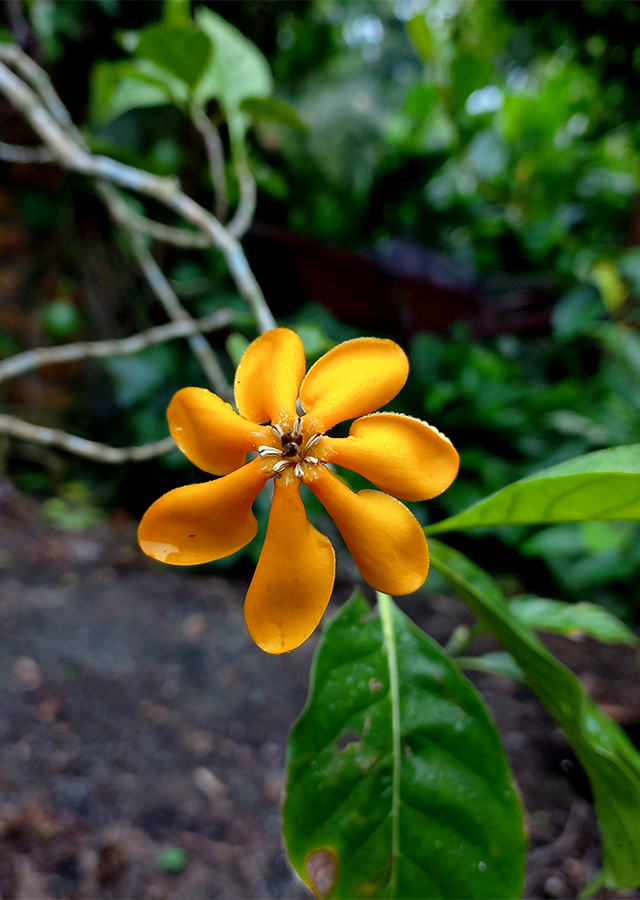Golden Gardenia
Gardenia carinata Wall. ex Roxb.
Rubiaceae
Location in our garden
Principal



Synonym
-
Habitus
Trees. An evergreen perennial tree growing up to 15 m tall.
Part Used
Leaves
Growing Requirements
Full Sunshine
Habitat
Forest
Roadside
Terrestrial
Overview
Gardenia carinata is a flowering species of the Rubiaceae family, native to Thailand and Peninsular Malaysia. This species is widely distributed in tropical and subtropical Africa, Australia, South Asia and South-East Asia. It is a popular plant as an ornamental plant for its unique colour and shape, and its fragrance. Studies have shown that G. carinata contains various important compounds and has therapeutic potential that can be used as alternative therapeutic agents against certain microorganisms in drug development in the future.
Vernacular Names
Kedah gardenia (Malay).
Agroecology
Golden gardenia occurs in lowland forests and hills. It can be found on roadsides as an ornamental plant. It grows in areas with full sun or bright, and needs moderate water. It prefers well-drained soils.
Morphology
- Stem - round, cylindrical, brown in colour.
- Leaves - unifoliate, pinnate, acute, attenuate elliptic to obovate with entire leaf margin and prominent venation. Leaf underside is hairy and green in colour.
- Flower - bisexual, shaped like pinwheels. large, about 11.5 cm in diameterThey are initially white, but turn yellow and then orange over the course of 2-3 days. Calyx tube is five-lobed, middle marked with 5 strong keels, Tube of the flower is narrow and very long, and opens into a flat-faced flower with 6 or more petals.
- Fruit - round fruits have about 5 distinct, evenly spaced ridges that run longitudinally. Fruits are yellowish green and later turn brown-black when dry.
Cultivation
Generatively propagated by seeds and vegetatively by grafting.
Chemical Constituents
Eight cycloartane triterpenoids (carinatins A-H), secaubryolide, dikamaliartane D, flavonoids, saponins, tannins, C-glycoside, phenolic compounds, essential oils (trans-geraniol and farnesol).
Traditional Medicinal Uses
Golden gardenia has various therapeutic uses such as anti-HIV, cytotoxic, anti-inflammatory, anticancer, antihyaluronidase, and antimicrobial activities.
Part Used
Reference Sources
- Appalaraju, V.V., Ismail, N.E., Adimoolam, S., and Tan, Xin Yi. (No date). Phytochemical screening and evaluation of anti-inflammatory activity of Gardenia carinata leaves. https://www.frontiersin.org/10.3389%2Fconf.fphar.2018.63.00097/event_abstract. 29-04-2022.
- Flowers of India. (No date). Golden Gardenia. https://www.flowersofindia.net/catalog/slides/Golden%20Gardenia.html. 29-04-2022.
- Kew Royal Botanic Gardens.(No date). Plants of the World Online: Gardenia carinata Wall. ex Roxb. https://powo.science.kew.org/taxon/urn:lsid:ipni.org:names:750947-1. 29-04-2022.
- Khammee, T., et al.(2019). Volatile constituents, in vitro and in silico anti-hyaluronidase activity of the essential oil from Gardenia carinata Wall. ex Roxb. flowers. Biointerface Research in Applied Chemistry, 9(6): 4649-4654.
- Kongkum, N., et. al. (2013). Cytotoxic, antitopoisomerase IIα, and anti-HIV-1 activities of triterpenoids isolated from leaves and twigs of Gardenia carinata. Journal of natural products. DOI:10.1021/np3006887. https://www.semanticscholar.org/paper/Cytotoxic%2C-antitopoisomerase-II%CE%B1%2C-and-anti-HIV-1-of-Kongkum-Tuchinda/5ec474e34e8309e62b93f5ea97458e9568c11b26. 29-04-2022.
- National Park of Singapore (2022). Flora Fauna Web: Gardenia carinata. https://www.nparks.gov.sg/florafaunaweb/flora/2/9/2932. 29-04-2022.
- Plant Resources of South-East Asia. (No date). Gardenia carinata (PROSEA). https://uses.plantnet-project.org/en/Gardenia_carinata_(PROSEA). 29-04-2022.
